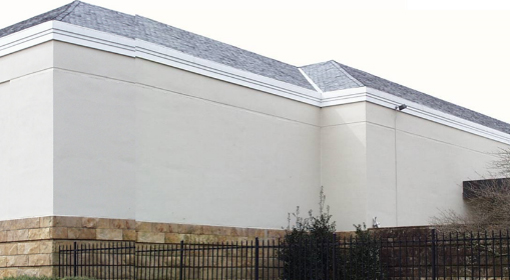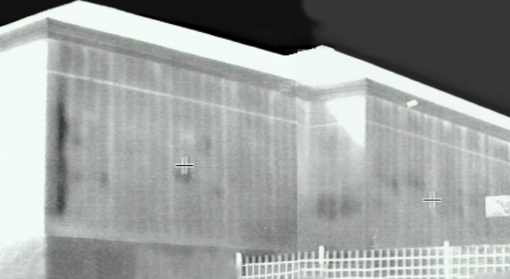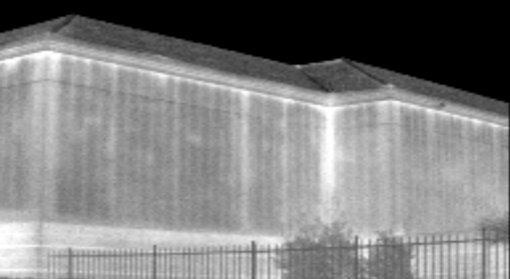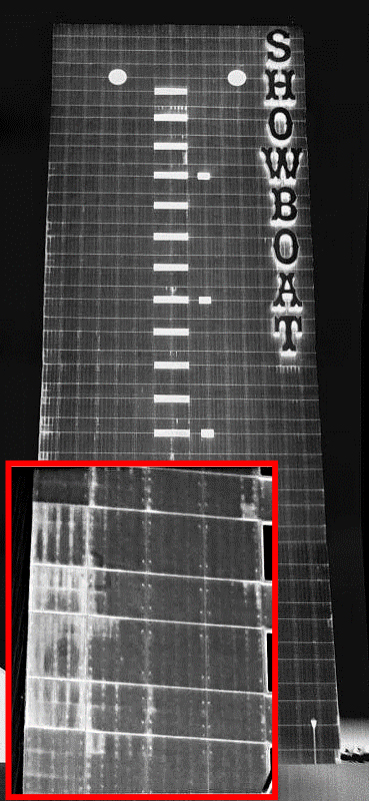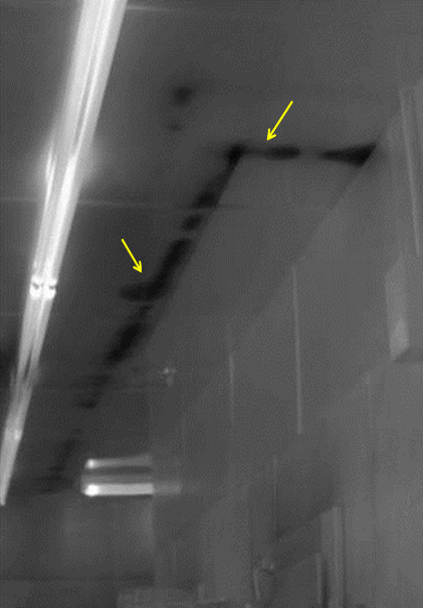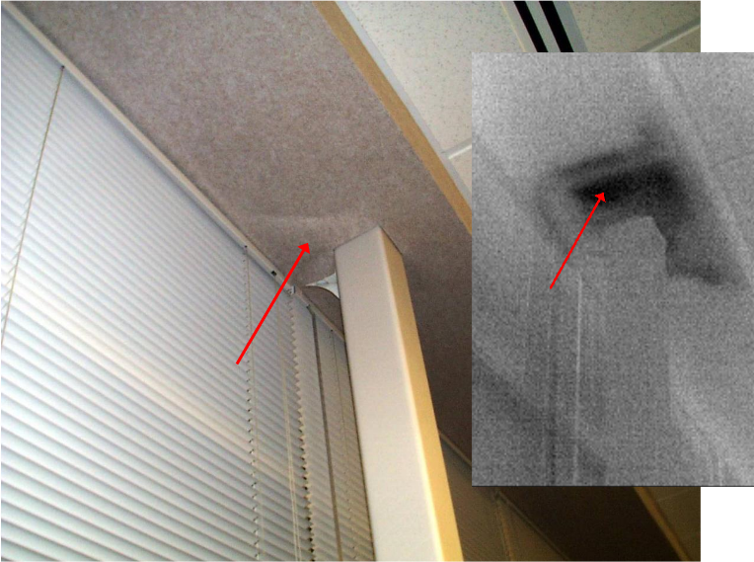Moisture Intrusion Surveys
Building moisture issues can have a number of negative impacts on a building and its occupants, including structural damage, health problems, increased energy costs, and reduced property value. Properly conducted moisture intrusion surveys can prevent these issues and prolong the life and health of your buildings.
Infrared technology can be used to pinpoint and address building moisture issues by detecting changes in the heat signature of a building that may be caused by moisture. Our building moisture services include surveys for both exterior leaks and interior leaks using infrared technology.
Moisture ingress discovered in EFIS
Exterior Moisture Intrusion
There are several potential causes of exterior building moisture leaks, including:
- Inadequate construction or installation of the building envelope, such as insufficient flashing or sealants
- Damage to the building envelope, such as holes or cracks in the siding or roof
- Poor drainage around the foundation of the building, which can lead to water infiltration
- Clogged or damaged gutters that can cause water to overflow and enter the building
- Defective building materials, such as porous or absorbent materials that can retain moisture
It is vital to pinpoint sources of external leaks to address the root cause of moisture issues and prevent further damage.
With the help of thermal infrared, we are able to survey the exterior of entire buildings, making exterior maintenance much more cost-effective.
Interior Moisture Intrusion
There are several potential causes and sources of interior building leaks, including:
- Plumbing issues, such as burst pipes or leaking faucets
- Condensation on windows or other surfaces that can collect and cause water damage
- Leaks in the roof or walls, which can be caused by damage or improper construction
- Water damage to building materials, such as mold or rot
- Flooding from natural disasters, such as heavy rainfall or storms
It is important to promptly identify and address the source of any interior building leaks. Identifying issues early can prevent further damage and maintain the safety and integrity of the building.
Our infrared surveys can detect moisture issues early, often before a stain is even apparent, which can prevent more costly repairs and increase the lifespan of the building.
More on building moisture surveys
Building moisture issues can have a number of negative impacts, both for the building itself and for the people who live or work in it. Some of the potential impacts of building moisture issues include:
- Structural damage: Moisture can cause wood and other building materials to rot, leading to structural damage and potentially making the building unsafe.
- Health problems: Moisture can also create an environment that is conducive to the growth of mold and other harmful substances, which can cause respiratory problems, allergies, and other health issues for the people who live or work in the building.
- Increased energy costs: Moisture can also make it difficult for a building to retain heat, leading to higher energy costs for heating and cooling.
- Reduced property value: Moisture issues can also decrease the value of a building, making it less attractive to potential buyers or renters.
What is Infrared Technology?
Infrared technology uses infrared radiation to detect and measure heat signatures. One can use this technology to detect moisture intrusion in buildings by detecting variations in the building’s heat signature.
How Can Infrared Be Used to Detect Moisture Intrusion?
Infrared technology can be used to scan a building’s components to identify areas where moisture may be present. Moisture in a building can change the heat signature of the building. An infrared camera can detect changes in the heat signature.
Changes in heat signatures allow property owners and maintenance professionals to identify areas of the building where moisture may be present. Even if the moisture is not visible to the naked eye, it can still be detected through infrared technology.
Infrared Technology for Moisture Intrusion Detection
In addition to detecting moisture intrusion, infrared technology can also be used to identify the source of the moisture and determine the best course of action for addressing the issue.
For example, an infrared camera can be used to scan the building’s roof, walls, and other systems to identify the source of the moisture and determine the best way to repair or prevent further moisture intrusion.
Benefits of Infrared Technology for Moisture Intrusion Detection
Overall, infrared technology can be a useful tool for detecting and addressing moisture intrusion in buildings. Regularly scanning the building with an infrared camera allows property owners and maintenance professionals to identify potential issues. They can then take steps to prevent costly damage and improve the building’s overall health and safety.
A division of Stockton Infrared Thermographic Services.

